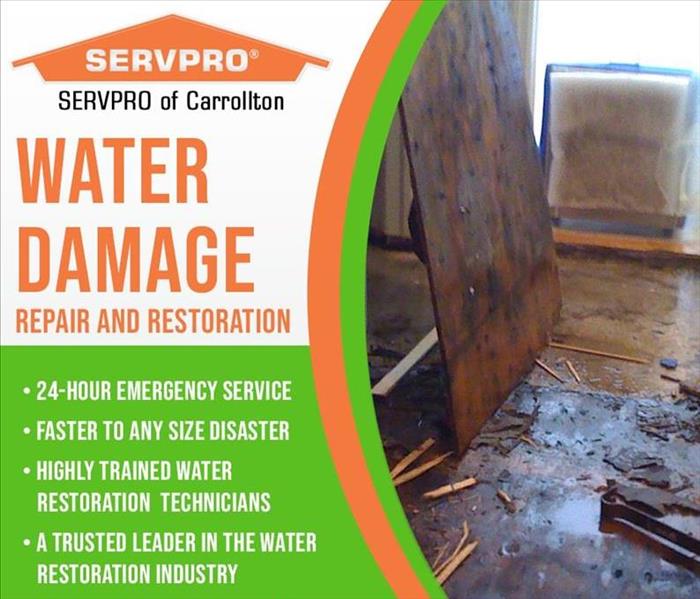Sewage Back up in your home.
10/15/2021 (Permalink)
When sewer lines become obstructed, preventing wastewater from flowing through drainage pipes, blockage occurs. The thick, black water that forms as sewage is a potential hazard, as it contains contaminants and viruses that can present a risk of severe illness if exposed to humans or animals.
If you have a sewage backup in your home you will need to fix it quickly. However, knowing what causes sewer backups can help you prevent a hazardous situation in your basement or home. Here’s how to prevent and handle sewage backups in your pipes:
Causes for a Sewage Backup in the Basement
- Clogs – Sewage can back up into your home when either your home’s drain pipes or main sewer line becomes clogged. For example, if one toilet creates a sewage backup, the drain connected to that toilet will likely be clogged. But if all toilets or bathtubs in your home create backflows, then there may be a clog in the main sewer line or the sump pump failed. Clogs can consist of hair, grease, or other solid materials that end up in the drains.
- Tree Roots – Trees can grow really long roots that intertwine with your sewer line. Roots can grow into a pipe and cause holes or crush the sewer line by growing around it. Even if the roots in your yard are not the problem, roots from nearby trees can reach your sewer line and damage it.
- Damaged Sewer Lines– In the past, pipes were made of cast iron and clay piping which don’t last very long. Aging sewage systems can break down and crack, causing sewage backups and flooded basements. Plastic sewer lines have now become the norm.
- Heavy Rainfall – Can heavy rain cause sewer backup? Yes, large amounts of rain can overburden your city’s sewer lines. If the public sewer can’t handle excess rainfall, the water can make its way into connected sewer lines. This puts your home at risk of water backflows.
How to Prevent a Sewage Backup-
- Don’t pour grease down the drain. Cooking oil can harden within your pipes; it gradually stops debris from draining, creating a clog. To properly dispose of grease or fat, pour it into a heat-resistant container and throw it in the trash after it cools off.
- Dispose of paper products properly. Flushing hygiene products such as paper towels, diapers, or feminine products down the toilet can easily clog your sewer line. Save yourself some trouble and discard paper products in the trash.
- Install a new plastic pipe or cut tree roots. To prevent tree roots from damaging your sewer lateral (the line buried in your yard),replace it with a new plastic pipe. If tree roots still grow in your sewer lateral, cut the roots occasionally.
- Install a backwater prevention valve. This fixture allows sewage to leave but prevents it from backing up into your home. Backwater valves are typically installed into a sewer line and sometimes into a drain line in the basement.
- Sewage pump maintenance. Ensure your sump pump doesn’t sit on debris such as silt or gravel, which could be sucked up into the pump, ruining the motor. Instead, place it on a steady flat brick. Also, ensure the sump basin has a filter fabric around it to stop debris from coming in.

 24/7 Emergency Service
24/7 Emergency Service
